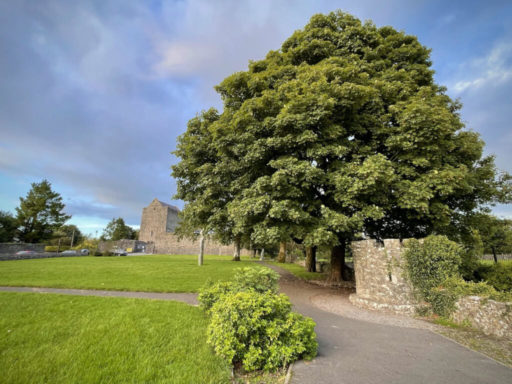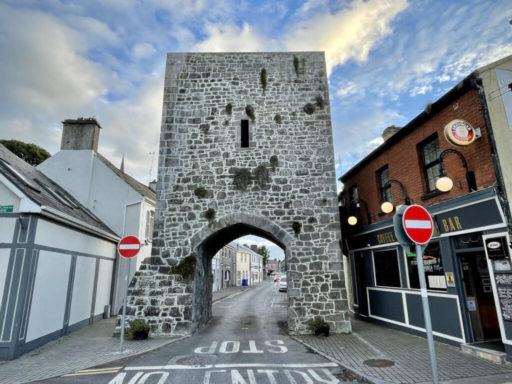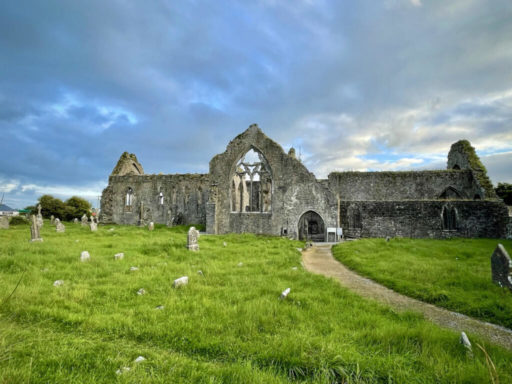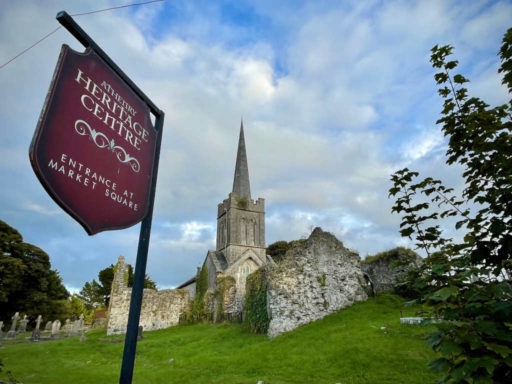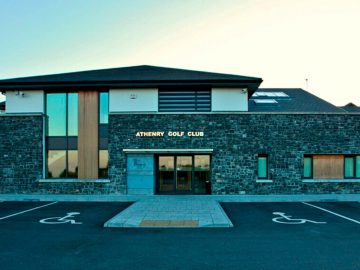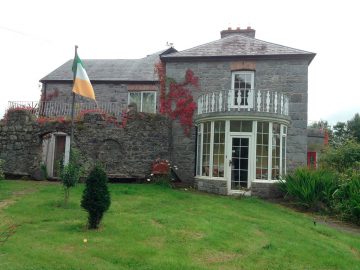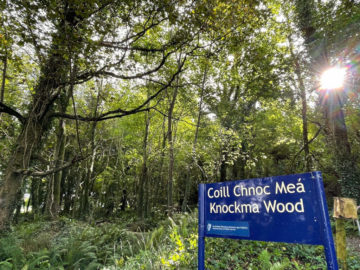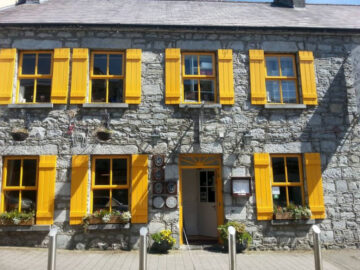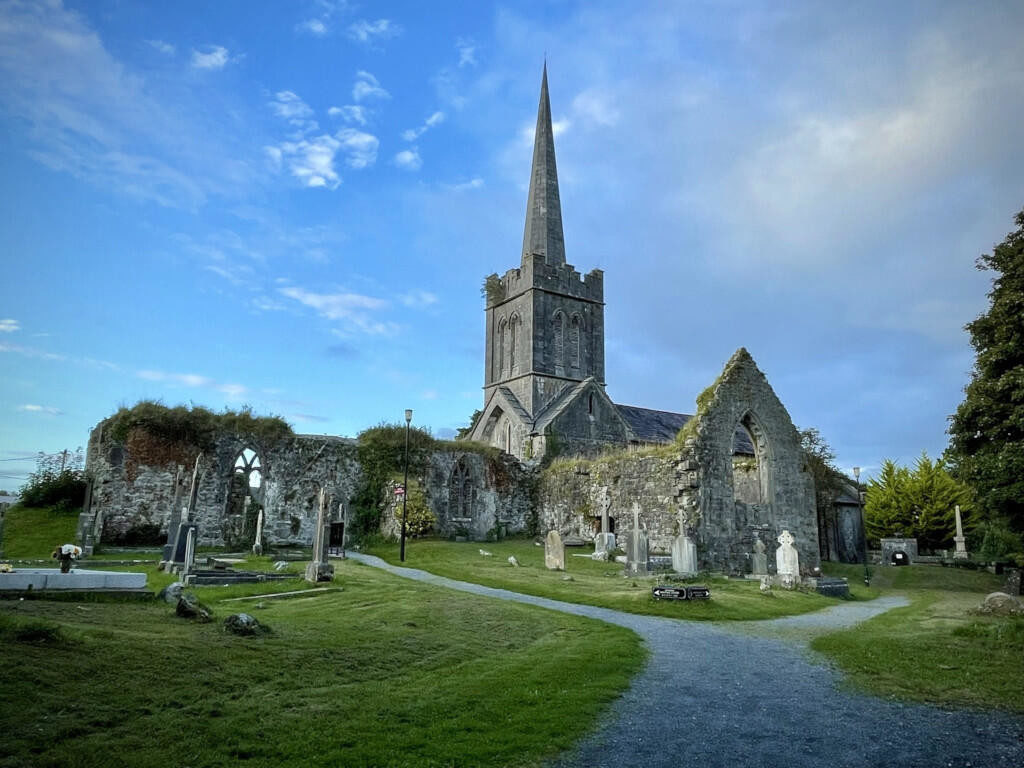
Athenry
Discover the medieval walled town of Athenry
North-west 12 miles (19 km) from Loughrea is the historic town of Athenry. Though Athenry may be small, its charm lies in its history, architecture, and community spirit. It’s a place where you can lose yourself in the heritage of the towns past while enjoying the warmth of its friendly people and their rich culture. The name of the town may sound familiar as it was made famous by a song which springs up at sporting events, in pubs, music sessions and folk music festivals around the world. “The Fields of Athenry” song written in Dublin in 1979 by Pete St. John has over the years grown in popularity to become something of Ireland’s informal national folk anthem.
Athenry in pictures
Where to stay
Athenry offers a range a good quality accommodation options from hotels and guesthouses and B&B’s to campsites.
How to get to Athenry, Co. Galway
Travel by train from Galway Train Station on Irish Rail on their Galway to Dublin commuter service. Alternatively travel by car from Galway taking the M6 motorway west from Galway City, taking exit 17 from the M6 onto the R348 to Athenry/Craughwell, then R347 to Caheroyn Road in Athenry.
History of Athenry
The medieval town of Athenry began its existence with the erection of a castle by Meyler de Bermingham, 2nd Baron of Athenry in 1238. The Anglo-Normans first came to Ireland seventy years before with the approval of the King of England, Henry II. It was not until 1235 that Richard de Burgo led invasion resulted in the subjugation of the province of Connacht.
While Athenry was experiencing its birth pangs, what was happening on the world stage? In 13th century Europe the struggle between the Papacy and the Monarchies continued with the Emperor, Fredrick II being excommunicated for a second time by Pope Gregory IX in 1239. The Mongal hordes under Genghis Khan overran China, Persia and Southern Russia and invaded Eastern Europe. At the battle of Bannockburn in 1314 in Scotland wrested her freedom from England. It was to be 250 years after the erection of Athenry Castle that Christopher Columbus discovered the Americas, and 550 years after, in 1787, that Britain began to colonise the vast subcontinent of Australia as a penal settlement.
Athenry Castle
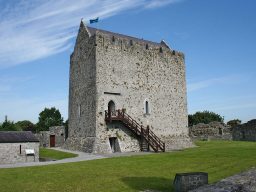 The Castle consists of a towering Keep surrounded by a curtain wall with three towers, one rectangular and two round. The Keep was basically a castle within a castle where the lord and his family and loya retainers lived. The river Clareen on the East side of the castle fed a wet ditch or moat encircling it.
The Castle consists of a towering Keep surrounded by a curtain wall with three towers, one rectangular and two round. The Keep was basically a castle within a castle where the lord and his family and loya retainers lived. The river Clareen on the East side of the castle fed a wet ditch or moat encircling it.
The Keep originally consisted of two storeys, the great hall and the basement. Within a few years another storey was added. In the 15th century the gable ends were raised and a new roof was fitted. Access was through a door on the first floor level on the East side which had a external stairs. Four windows, one on each side, provided the great hall with light. There is no evidence of a fireplace. For those living within it must have been a cold dreary place, especially in winter.
Lear more details about the history of Athenry Castle.
See Athenry Castle
Dominican Priory
In 1241 Meyler de Bermingham gave land to the Dominican Order and had the Priory of SS Peter and Paul built a few hundred yards South of the castle. The priory was enlarged in 1324, and rebuilt in 1427 after a fire engulfed it. It became a University in 1644, a few years prior to the Cromwellian suppression of the monasteries. It is a goldmine of historical data and architectural styles with some beautiful window designs, tombs, tomb recessers and inscribed grave slabs.
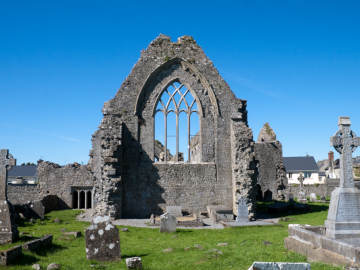
The Dominicans, the Order of Preachers combined a monastic lifestyle of prayer, silence and penance with a life of preaching the gospel supported by a sound academic education. One aspect of this austere life was the interrupted sleep caused by the midnight chanting of Matins and Lauds. In Athenry the Berminghams granted the friars a tenement at a nominal rent of a shilling a year to provide them with candles for this midnight office.
The design of the early 13th century Dominican Church was a long rectangular building, with the congregation in the nave separated from the friars in the choir by a stone screen. There were small windows in the screen which could be opened during the Liturgy to enable the people to witness the elevation of the Host. Later as the friars grew in number a transept was added in order to accommodate extra alters for saying Mass. Aisles were also built on to cater for larger congregations. The Athenry reconstruction of 1324 included the addition of a transept and an aisle, and the enlargement of the choir by twenty feet. The tower was added after the fire of 1423.
The years have caused the wall to crumble and the tower has fallen, however, the Priory of SS peter and Paul still generates a sense of times past and contributed to our knowledge of life in Medieval Monasteries.
Saint Mary’s Parish Church
This collegiate Parish Church, which was once thought to be the Franciscan Friary, stands in the grounds of the old Protestant Church a few hundred yards from the castle. It is now the site of the Heritage Centre and is of much architectural interest. It was built in the middle of the 13th century and totally destroyed by the Earl of Clanicard’s sons in 1574.
The Market Cross
This is a 15th century Lantern or Tabernacle type of Cross which was used to seal bargains at the weekly market in the town. It is to be found in the Town Square.
The Town Walls
Athenry was walled in the early 14th century. It received a murage grant in 1310 (a murage was a liberty granted by the King to collect monies for walling the town). It is said that the walls were built from the booty collected after the Battle of Athenry in 1316, in which the Anglo-Norman army of Richard de Burgo and Meyler de Bermingham defeated the Irish forces led by Felim O’Connor. It is chronicled that over 8,000 men were killed that day. This battle effectively destroyed the Irish resistance to the Anglo-Normans. The site of this confrontation is west of North Gate in which now stands Presentation Convent.
Most of the original town wall, which is surrounded by a moat, is still standing with 5 of it’s 6 towers. Of it’s 5 gates only the North Gate, or The Arch as it is locally known, remains.
One of the great attractions of the town walls is that they can be viewed at a distance, especially on the South and East side of the town. This feature, more than any other, gives Athenry it’s unmistakable sense of history, evoking memories of a busy Medieval town.
